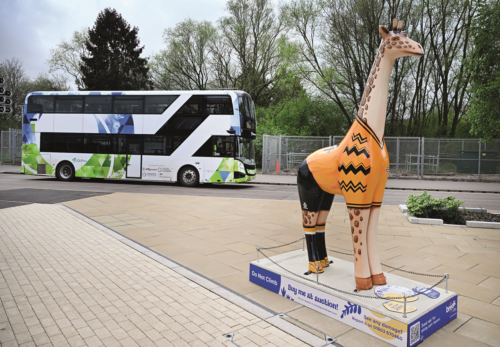
Steven Knight speaks with Darren Roe, Managing Director, and his engineering team at Stagecoach East about all things electric, the impact of congestion and the passenger offering
Anyone visiting Cambridge over the last year cannot have failed to notice the sheer number of electric buses that ply their trade across the city, their MCV bodywork giving them stature such that they appear to tower over other road vehicles and stand out from the crowd of other Stagecoach vehicles going about their daily business.
It has now been around a year since Stagecoach East started to put a fleet of 30 electric buses into service on its five park & ride routes, before then replacing diesel buses on its busy Citi 2 route, which serves Milton, Cambridge North rail station, the city centre, and Addenbrookes Hospital, with electrics.
These 30 electrics were the first of the Volvo BZL/MCV double-deck product to enter service in the UK and demonstrate the pioneering approach that Stagecoach, through its DWS owners, now takes.
The buses were ordered through the Government-funded ZEBRA project with contributions from Cambridgeshire & Peterborough Combined Authority and the Greater Cambridge Partnership. Despite the funding, which Managing Director Darren Roe says is fundamental to making a robust business case, Stagecoach contributed £7.3 million of the £16.57 million total investment. A knock-on effect of the introduction of the electrics was that Stagecoach was able to re-deploy the 21 Euro VI Alexander Dennis Enviro400MMCs previously used on the park & ride routes and displace older vehicles from its fleet. That included a large number of Scania/Enviro400 vehicles that had high operating costs and were not totally suited to urban city operation.
[…]By subscribing you will benefit from:
- Operator & Supplier Profiles
- Face-to-Face Interviews
- Lastest News
- Test Drives and Reviews
- Legal Updates
- Route Focus
- Industry Insider Opinions
- Passenger Perspective
- Vehicle Launches
- and much more!


